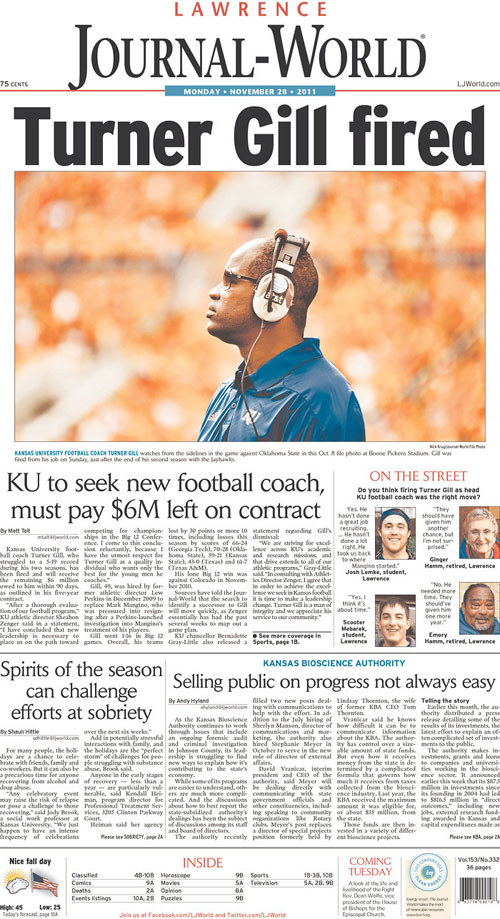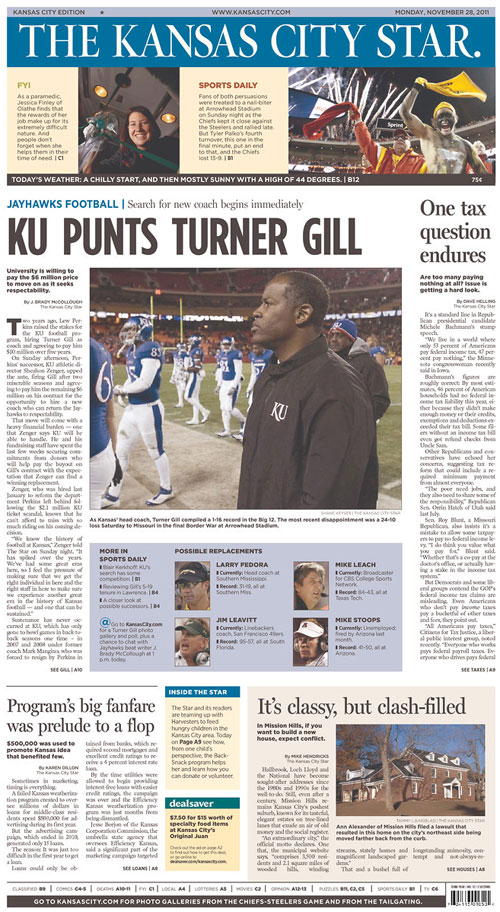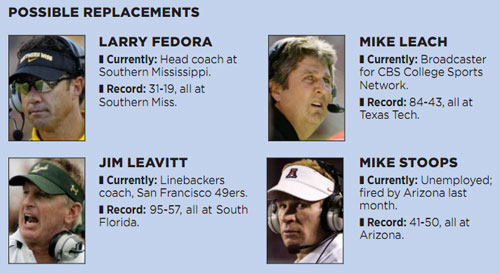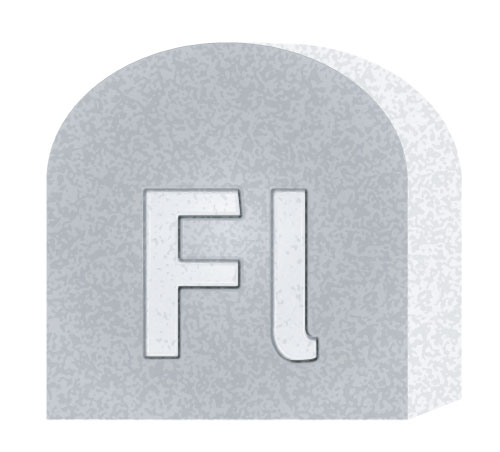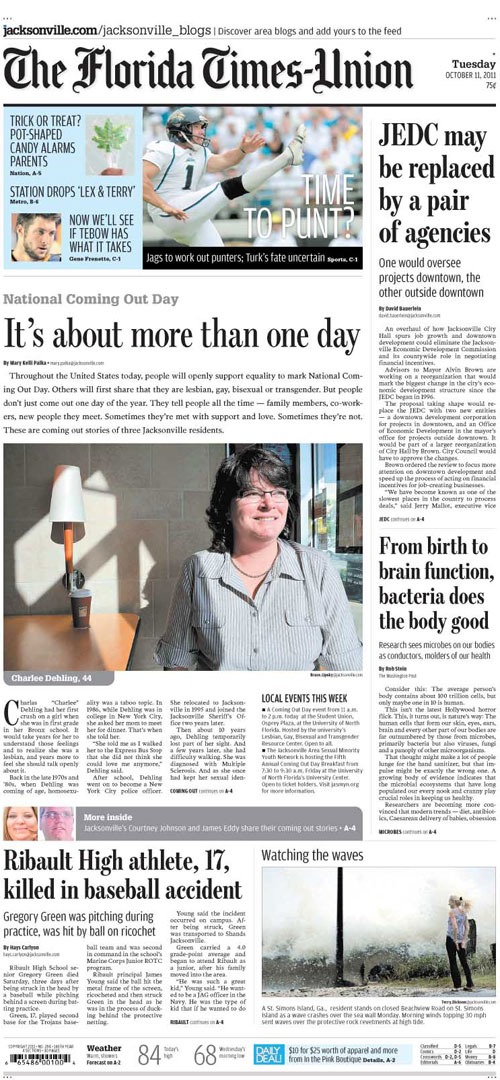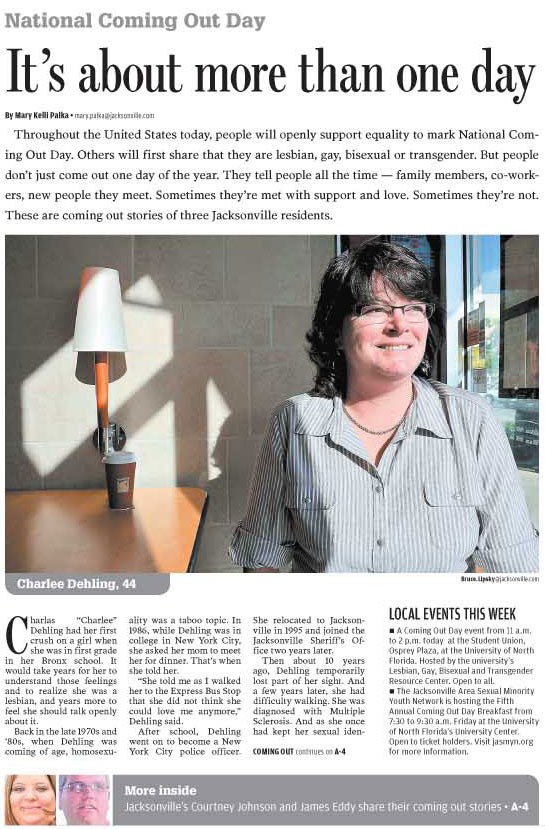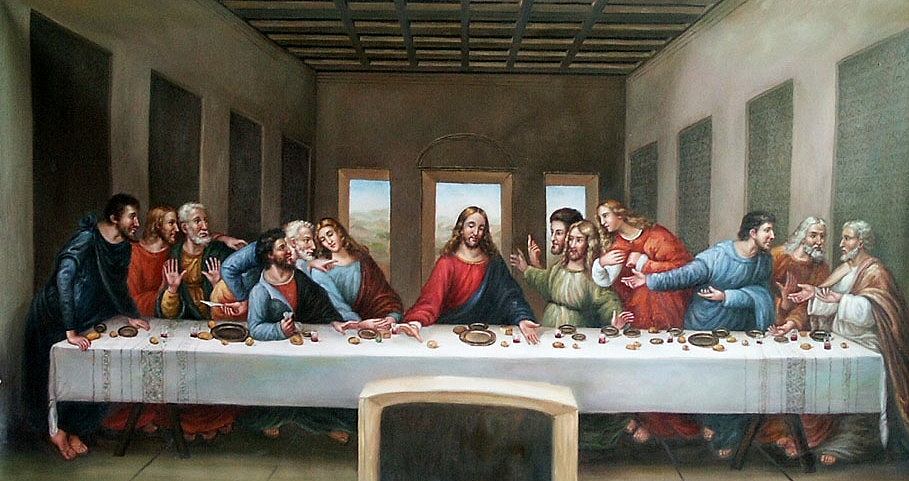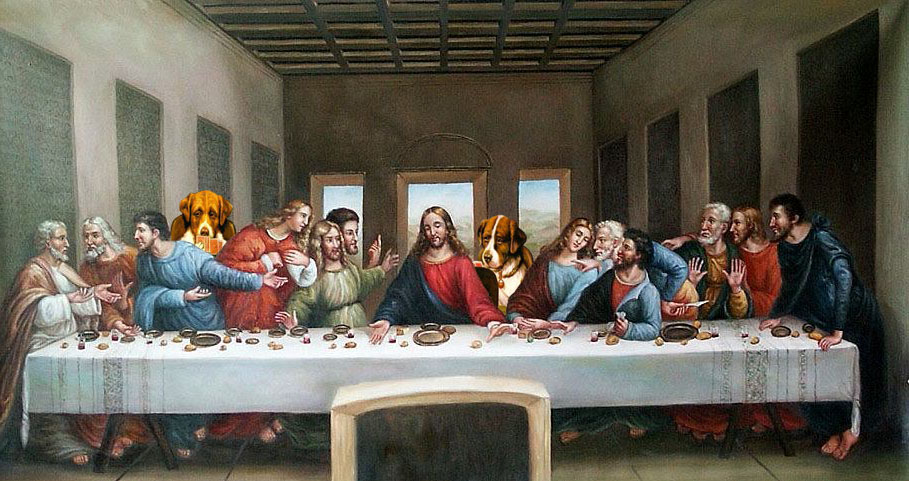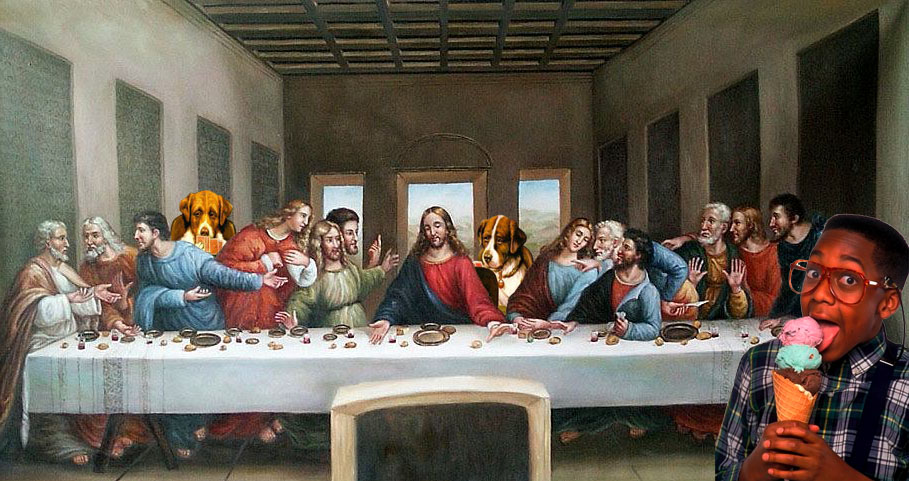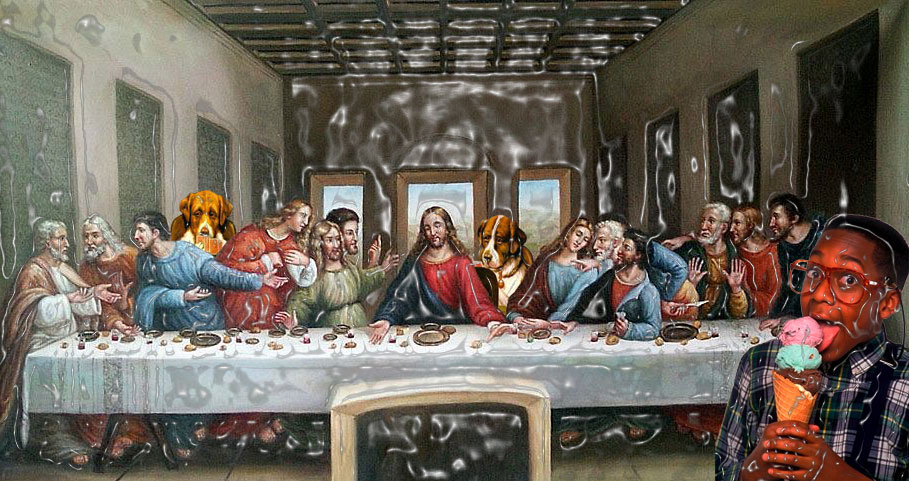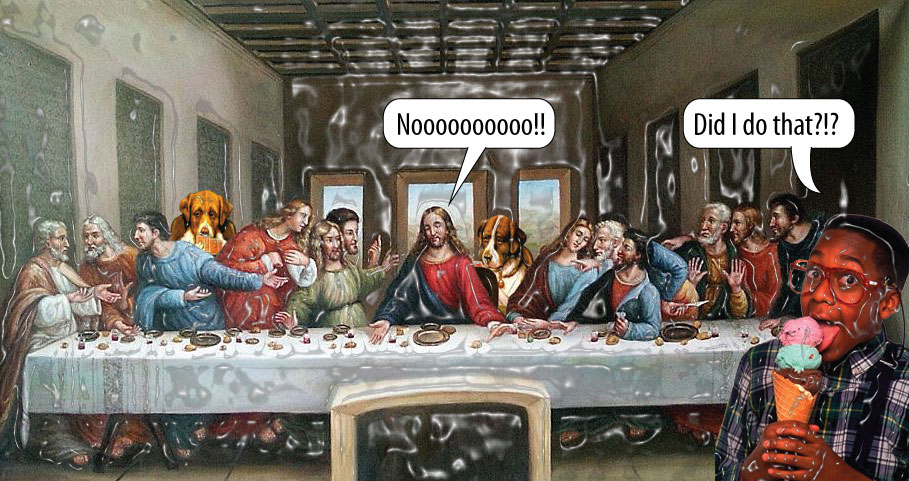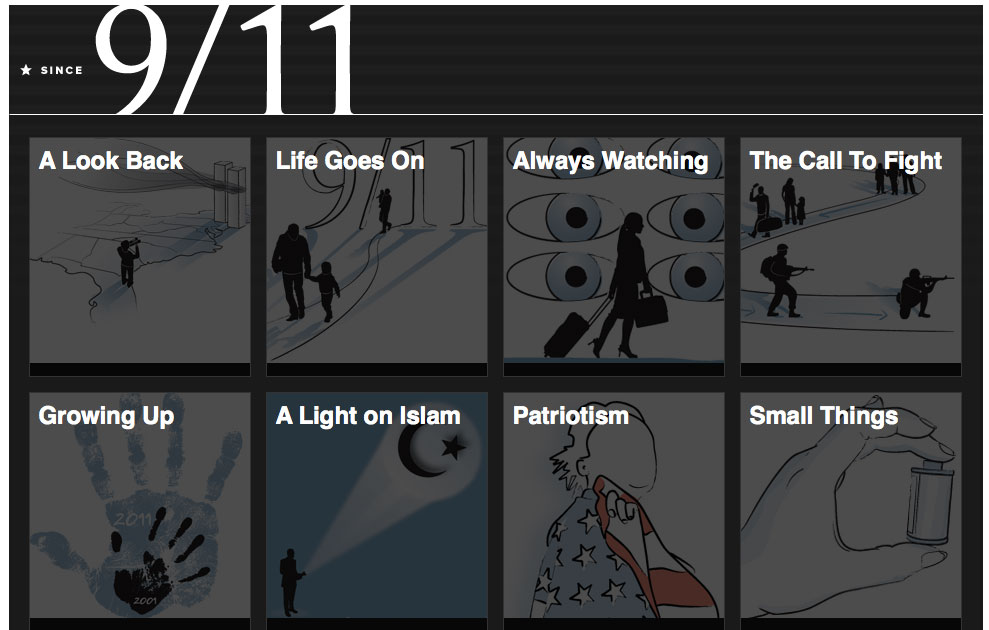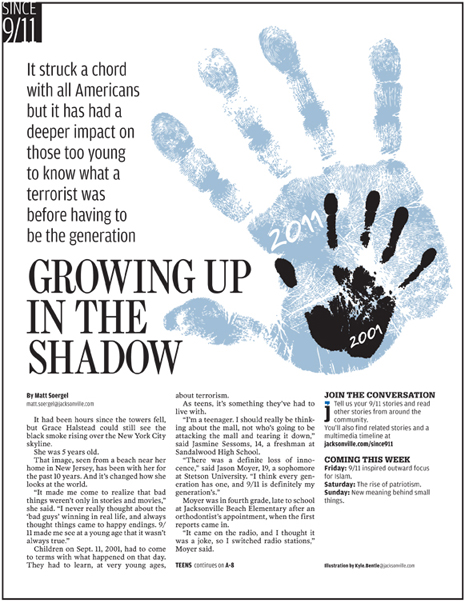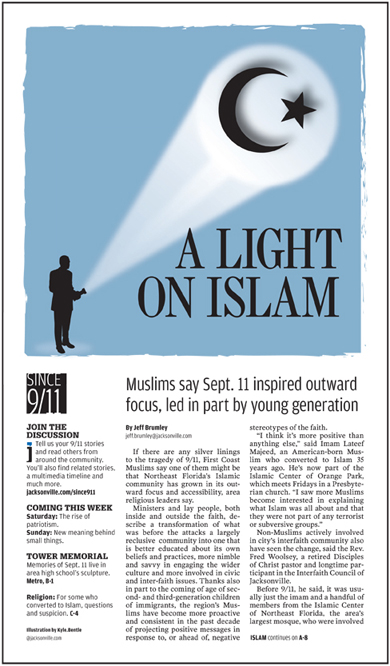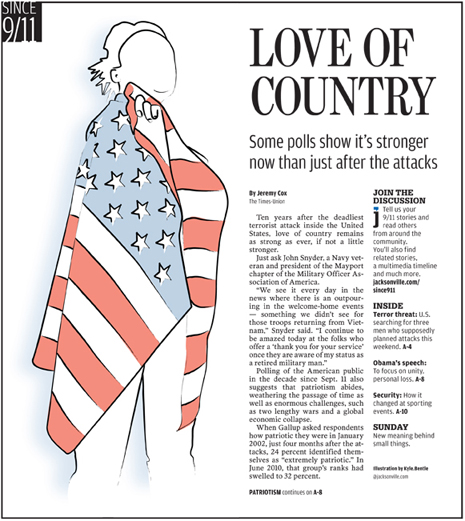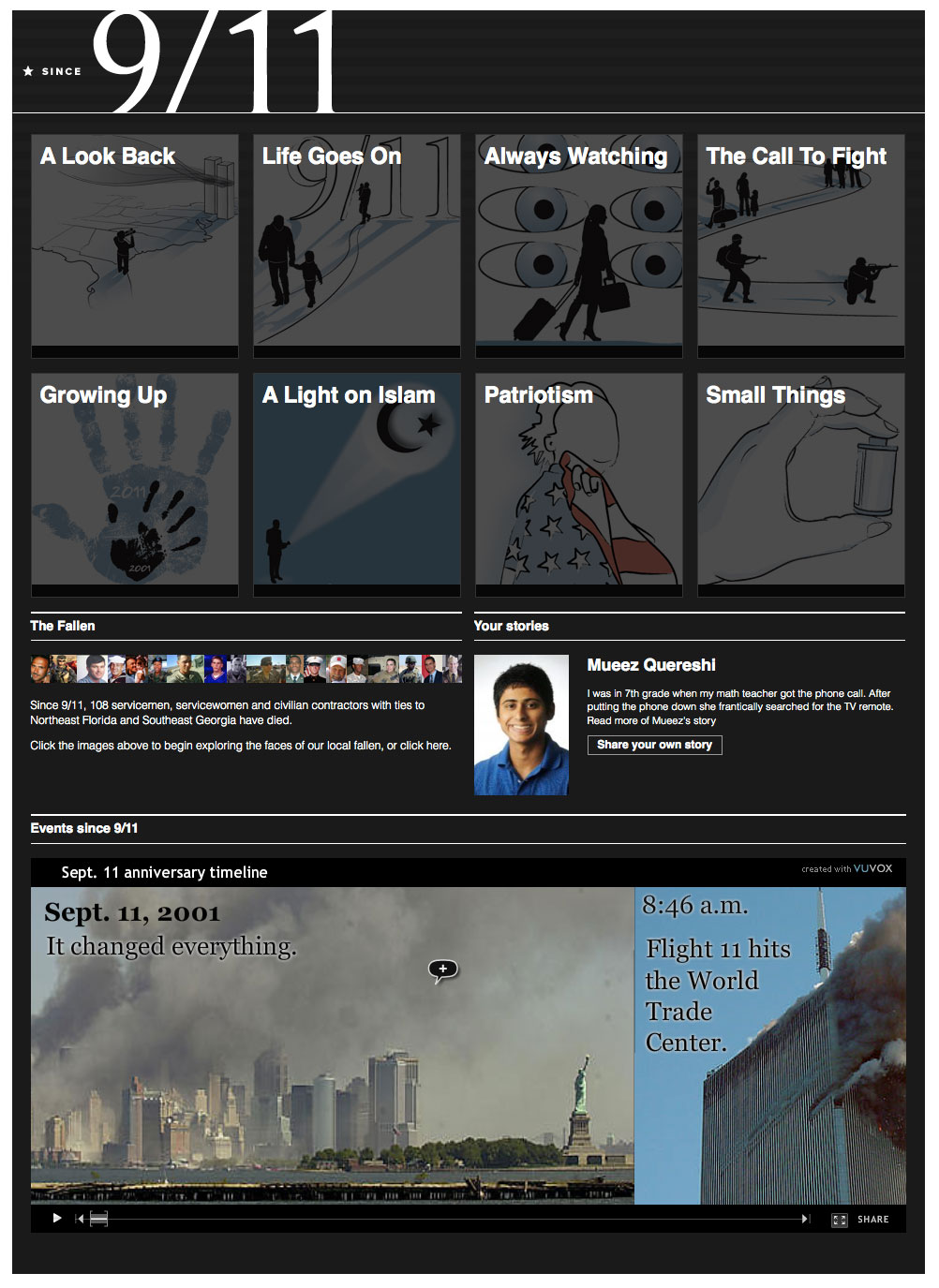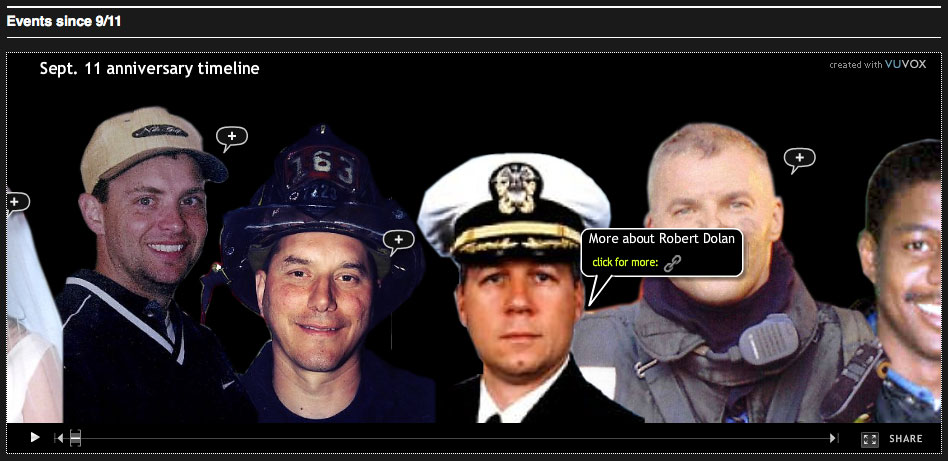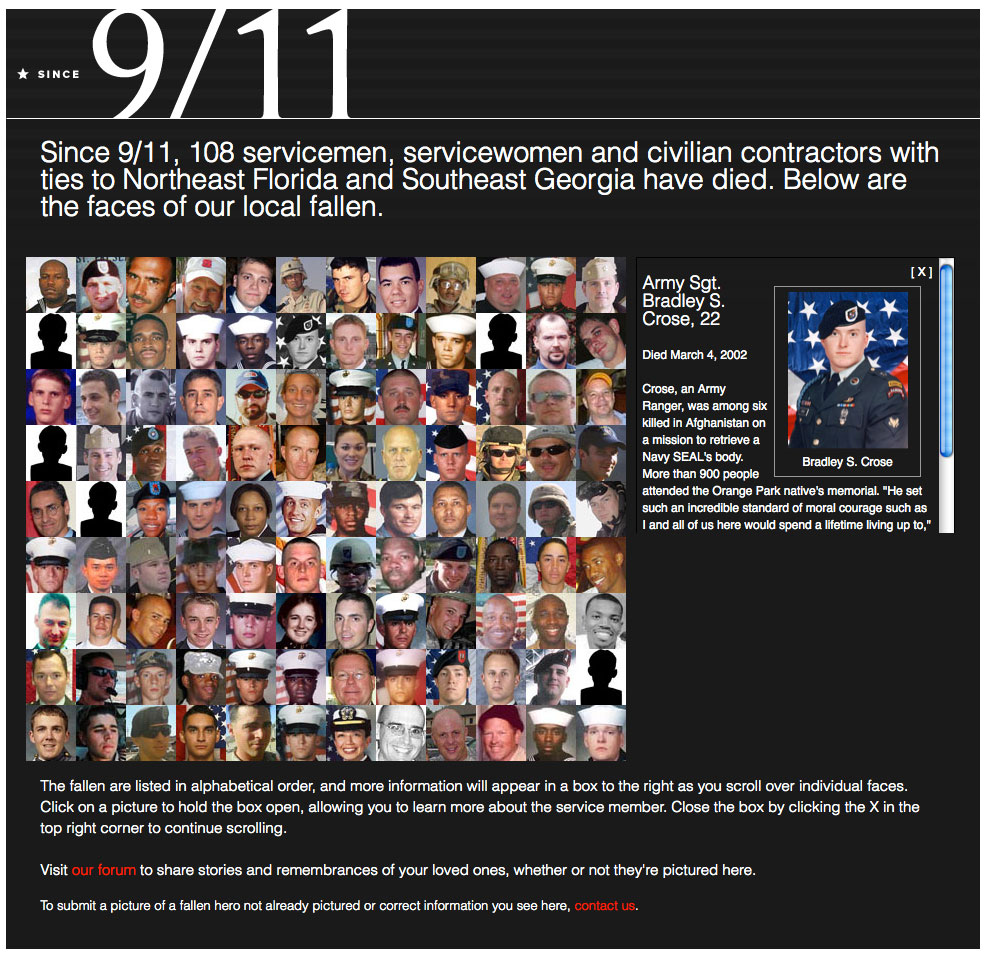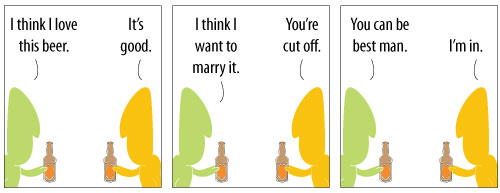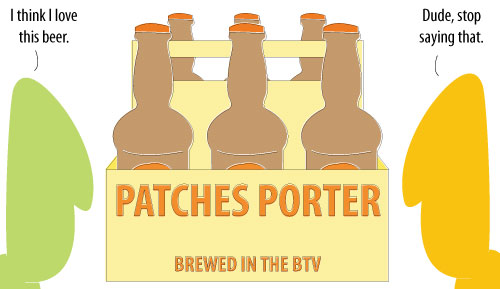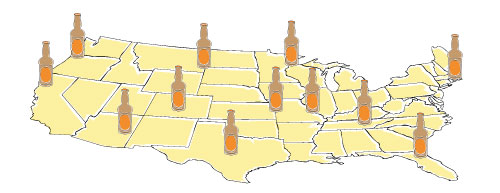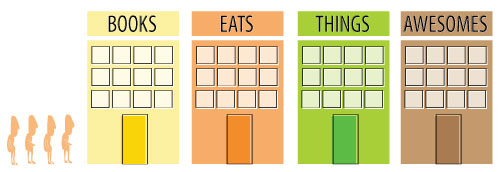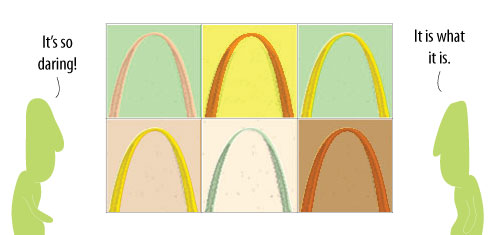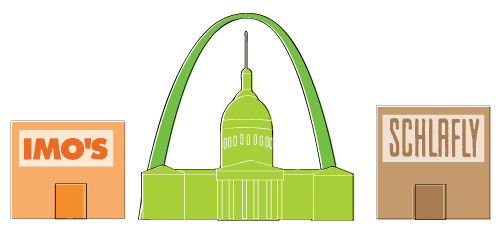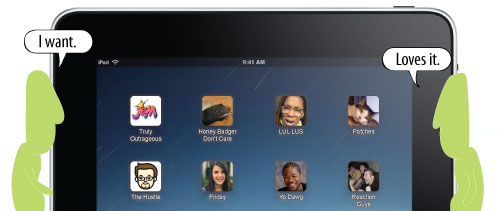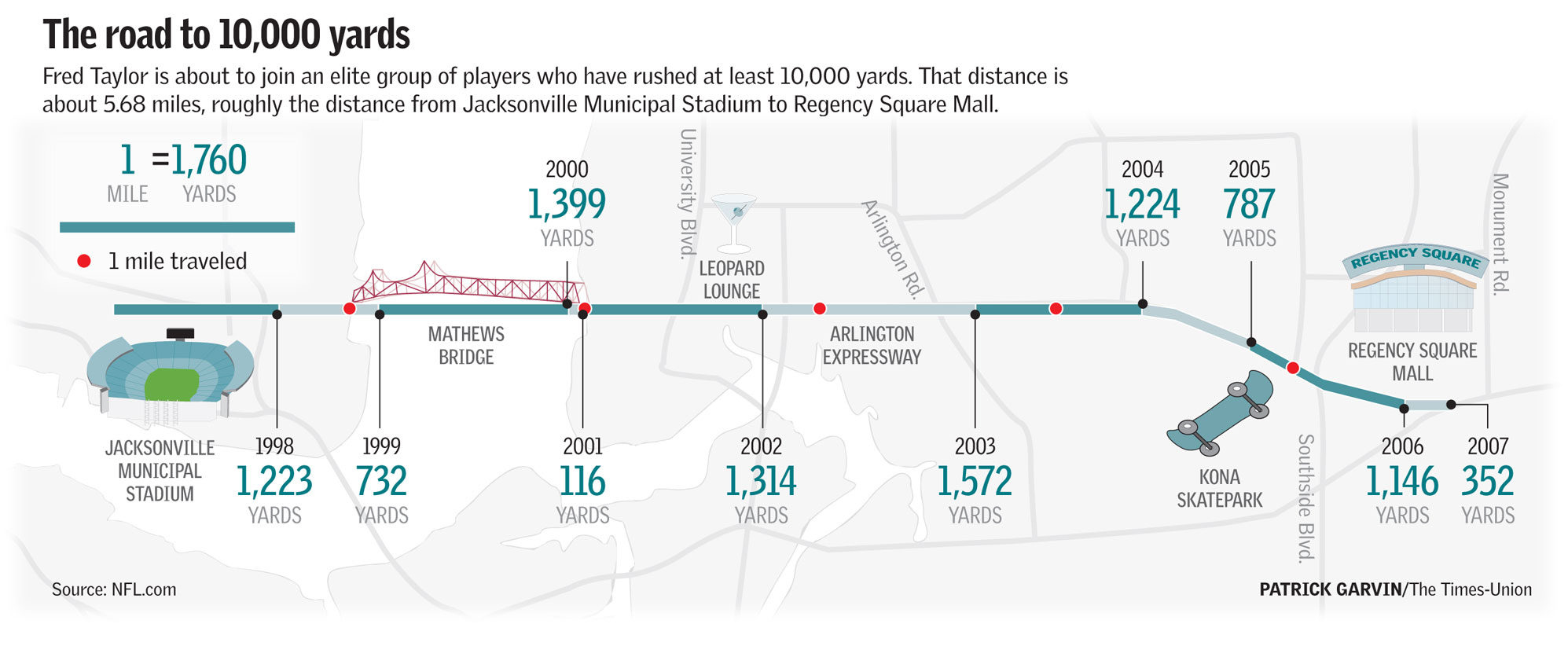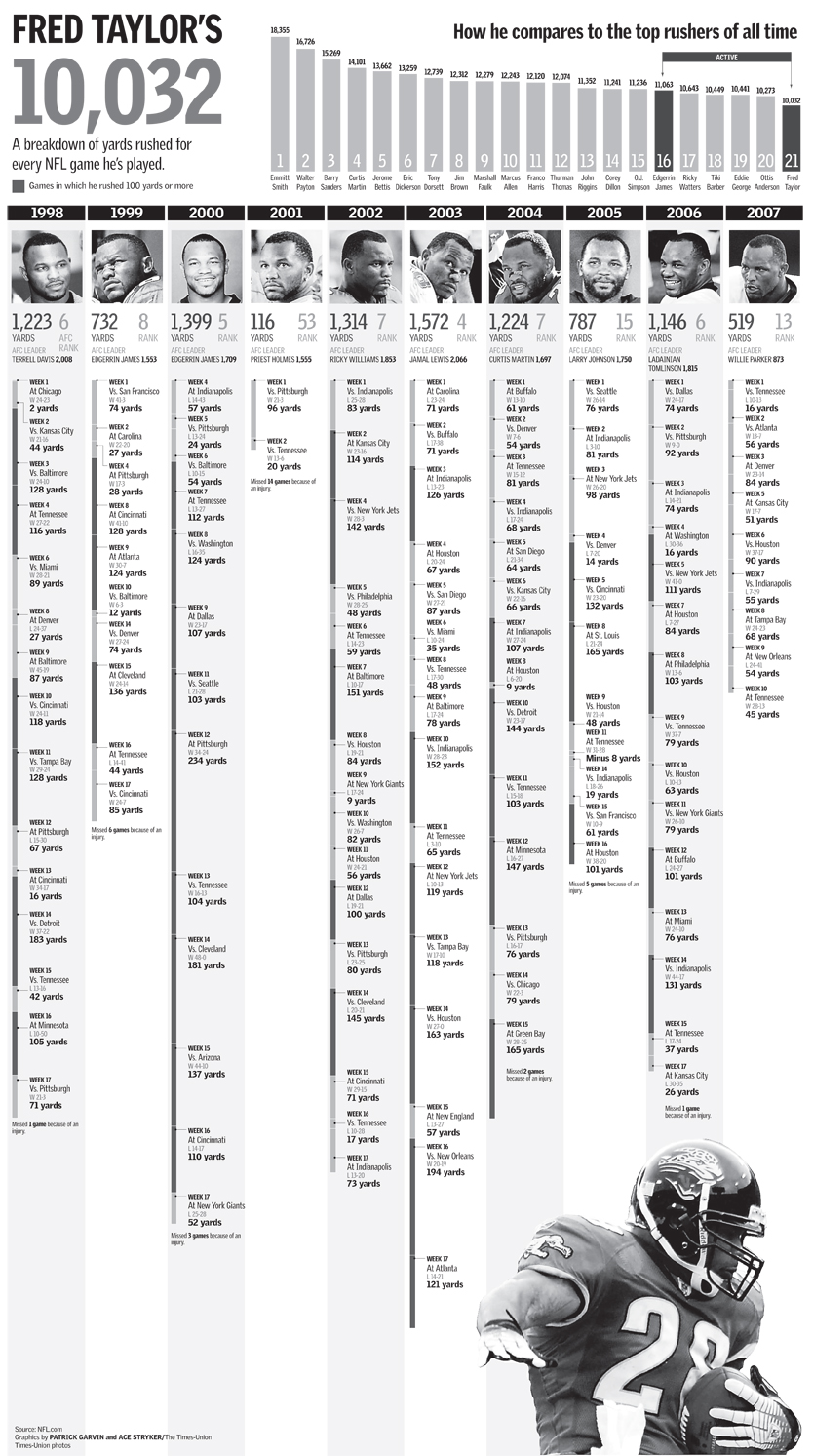College Football just finished its annual Rivalry Week, that great week when college sports fans most resemble WWF fans in their rabid hatred for the other guy, whomever the other guy might be.
For Missouri and Kansas fans, this rivalry goes way back and runs deep. The University of Missouri first played the University of Kansas in 1891, making it the second oldest rivalry in college football, and the oldest west of the Mississippi River.
The Associated Press wrote a few weeks ago:
The rancor is understandable. The rivalry predates college sports to a time when pro-slavery forces in Missouri battled free-state Kansans 150 years ago. Missouri fans have been known to invoke William Quantrill, a Confederate guerrilla leader whose Civil War assault on Lawrence in 1863 killed nearly 200 civilians and burned down most of the town. The series was officially known as the Border War before it was changed to Border Showdown several years ago when the country was fighting in two wars.
The Quantrill thing is serious. There are T-shirts featuring depictions of that massacre:

Courtesy of CollegeFootballResource.com
So, you see why the word “rancor” was aptly used in the AP article, right?
This year’s game, which was the 120th meeting of the two teams, took on even more importance after the University of Missouri announced it was leaving the Big 12 to join the SEC, effective July of 2012. Coaches and officials at the University of Kansas have said Kansas will not play Missouri out of conference. KU basketball coach Bill Self even said, “The majority of Kansas fans don’t give a flip about playing Missouri.”
So, I was kind of surprised to find minimal references to the Border War game when perusing Newseum in the last week. I wasn’t expecting big centerpieces, as it’s had to contend with Thanksgiving, Black Friday, the Super Committee and other news, but I was expecting at least a skybox here or there.
Today’s front pages didn’t have as much Border War coverage as I would have expected.
————
THE COLUMBIA MISSOURIAN
Columbia, Mo.
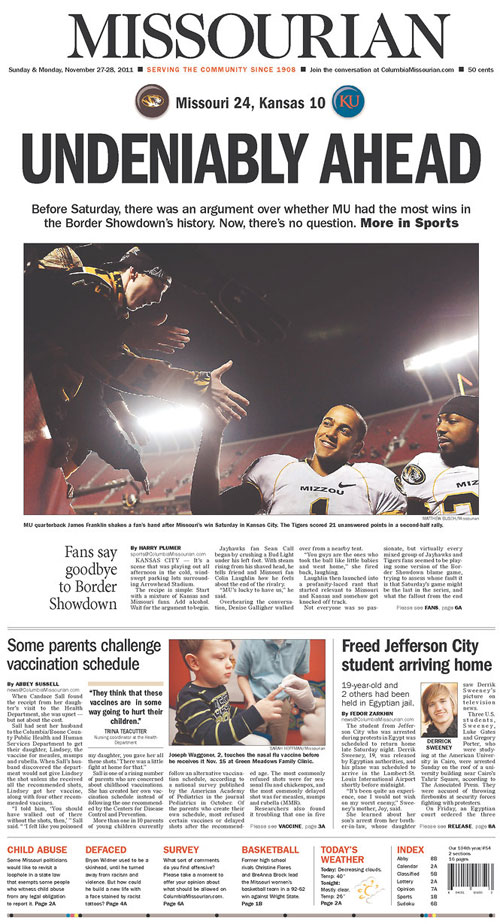
The deck explains that “UNDENIABLY AHEAD” headline:
Before Saturday, there was an argument over whether MU had the most wins in the Border Showdown’s history. Now, there’s no question.
Which is a polite way of saying what many Mizzou fans have been saying with their middle fingers for years.
————
THE LAWRENCE JOURNAL-WORLD
Lawrence, Kan.
The Jayhawks’ hometown paper played the game up top in bigger-than-normal skybox with the nameplate.

That subhed says it pretty well: “Jayhawks blow early lead in last Big 12 game against Tigers.” As a buddy said at The Boston ‘Zou watch party, “When did Kansas become the ’85 Bears?”
————
THE ST. JOSEPH NEWS-PRESS
St. Joseph, Mo.
The St. Joseph paper doesn’t mention yesterday’s game, but instead has a piece describing fan reaction to Mizzou’s move the SEC.
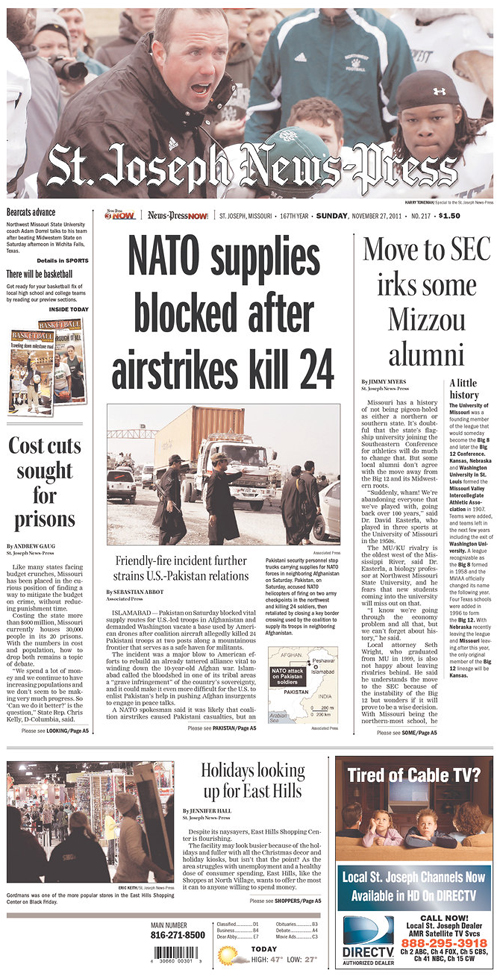 Most interesting, though, is the info box giving “A little history”:
Most interesting, though, is the info box giving “A little history”:
The University of Missouri was a founding member of the league that would someday become the Big 8 and later the Big 12 Conference. Kansas, Nebraska and Washington University in St. Louis formed the Missouri Valley Intercollegiate Athletic Association in 1907. Teams were added, and teams left in the next few years including the exit of Washington University. A league recognizable as the Big 8 formed in 1958 and the MVIAA officially changed its name the following year. Four Texas schools were added in 1996 to form the Big 12. With Nebraska recently leaving the league and Missouri leaving after this year, the only original member of the Big 12 will be Kansas.
There was a lot in there that I didn’t know.
When the announcement was made, one of the Columbia papers covered the hell out of it, especially in graphics…
————
THE COLUMBIA MISSOURIAN
Columbia, Mo.
The Missourian had several graphics about the move to the SEC, including some maps by Rachel Rice explaining how Missouri fits into the new conference. She touched upon something many of us have been saying: “But we’re not in the South!”
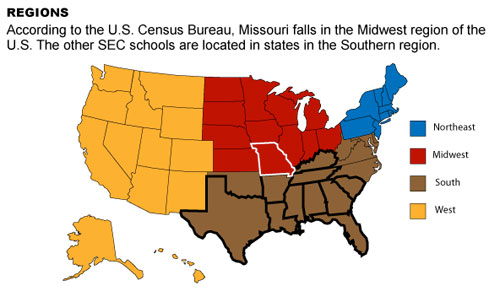 To see the rest of Rachel’s maps of Missouri’s new role in the SEC, go here. To see how Missouri stacks up academically against the SEC schools, go here.
To see the rest of Rachel’s maps of Missouri’s new role in the SEC, go here. To see how Missouri stacks up academically against the SEC schools, go here.
I’ll be interested to see more coverage once we’re actually playing in the SEC, without Texas.
And without Kansas.
RELATED
How Kansas area newspapers covered Turner Gill’s firing as KU football coach


